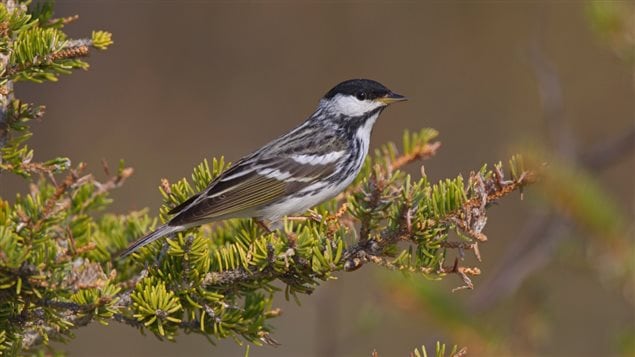Scientists have confirmed what is believed to be one of the most impressive animal migrations in the world. Around this time of year, the 15-gram blackpoll warbler leaves its winter grounds in South America and flies north making several stops along the way to breed in the boreal forest that spans of North America.
But when it makes the trip back in the fall, typically no one sees it in the regions between its northern and southern destinations. The theory over the last 50 years has been that the small birds may take a direct route over the Atlantic Ocean. Now, new technology has confirmed that.

Tiny backpack records flight information
In 2013, a tiny geolocator was developed that was half the weight of previous models. The devices were small enough to fit into tiny backpacks and were attached to 40 blackpoll warblers in eastern Canada. They were too small to transmit information, so scientists had to recapture the birds one year later to download the information they had collected.
‘Completely amazed’
“We were just completely amazed,” says Ryan Norris, a biology professor and researcher at the University of Guelph and lead author of this study. “These birds all made non-stop migrations over the Atlantic Ocean and landed either in Puerto Rico or Haiti for a few days, and then made another migration to their wintering grounds in Venezuela and Brazil…
‘A do-or-die migration’
“That first overwater flight to the greater Antilles lasted up to three days straight and covered a distance of about 25-hundred kilometres. This is a land bird so it cannot land on the water. So, this is a do-or-die migration that lasts three days straight,” says Norris.
ListenThe birds stuff themselves, sometimes doubling their weight, in order to store enough energy to make the flight. Sometimes they are so heavy, that they stay quite still until favourable winds pick up that help them on their journey south.

A ‘most extraordinary migratory feat’
It’s not known why the blackpoll warblers make this long migration on the way back only, but Norris thinks there may be some advantage to them arriving early in their wintering grounds or, that by not stopping, they avoid predators.
Either way, the study concludes that this is “one of the longest non-stop overwater flights recorded for a songbird and confirms what has long been believed to be one of them most extraordinary migratory feats on the planet.”







For reasons beyond our control, and for an undetermined period of time, our comment section is now closed. However, our social networks remain open to your contributions.